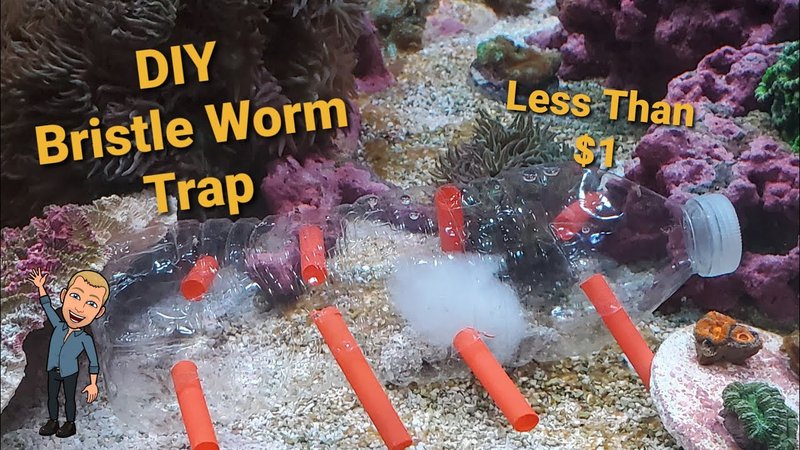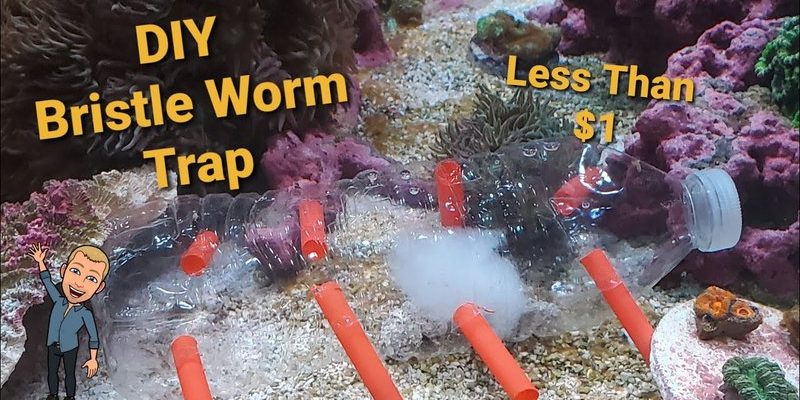
Bristle worms, belonging to the class Polychaeta, have bristles or “setae” that can irritate the skin if they come into contact with you. Think of them as the prickly cousins of the ocean floor, adding texture to the marine ecosystem. The sting from a bristle worm can range from mildly annoying to quite painful, depending on the type of worm and your sensitivity. It’s no fun to be distracted by a bite during your underwater escapades, so knowing how to treat these bites is essential.
In this article, we’ll explore **the symptoms** of a bristle worm bite and offer some effective remedies to help soothe the discomfort. Whether you’re a seasoned diver or just starting out, having this knowledge at your fingertips can make all the difference.
Recognizing Bristle Worm Bites
When it comes to understanding **bristle worm bites**, the first step is recognizing the symptoms. After all, you can’t treat what you don’t know you’ve got, right? Typically, a bite will present itself as a localized area of redness and swelling. You might also notice some small, raised welts on your skin. These bumps can sometimes resemble hives or mosquito bites, which makes it easy to misidentify them.
Along with redness and swelling, many people experience a burning sensation around the bite site. Honestly, this can feel like a nasty sunburn, which is not something anyone wants to deal with while enjoying their day. If you’re feeling itching or a tingling sensation, that’s another sign you’ve likely had a run-in with one of these marine critters.
In some cases, individuals may have an allergic reaction to the bite. Symptoms of an allergic reaction can include difficulty breathing, swelling in the face or throat, or an increased heart rate. If you notice any of these more severe symptoms, it’s crucial to get medical help right away.
Initial Steps After a Bite
So, you’ve been bitten. What should you do next? The immediate response after a **bristle worm bite** is key to minimizing discomfort. Start by removing yourself from the water. You don’t want to risk further irritation or more bites from other marine creatures.
Once you’re out, it’s important to gently rinse the affected area with seawater. You might be thinking, “Why seawater?” The reason is that it helps flush out any tiny bristles that may still be stuck in your skin. Avoid using fresh water at this stage because it can cause the venom to spread further, worsening the sting.
After rinsing, inspect the bite area closely. If you see any bristles embedded in your skin, you can remove them with a pair of tweezers. Be careful not to squeeze too hard, as this can push any remaining bristle fragments deeper into your skin.
Home Remedies for Relief
Once you’ve taken the initial steps after a **bristle worm bite**, it’s time to find some relief. Here are a few home remedies that can help ease the pain:
- Cold Compress: Apply a cold pack or a cloth soaked in cold water to the bite area. This can help reduce swelling and numb the pain.
- Hydrocortisone Cream: Over-the-counter hydrocortisone cream can help decrease inflammation and itching. Just apply a thin layer to the affected area as directed.
- Antihistamines: If you’re dealing with significant itching, taking an oral antihistamine may provide relief. Just be sure to follow the dosing instructions on the package.
- Aloe Vera: This plant is known for its soothing properties. Applying fresh aloe vera gel to the bite can cool the area and help with healing.
Using these home remedies can make a world of difference, but keep in mind that they may not work for everyone. It’s all about finding what soothes you best.
When to Seek Medical Attention
While many bristle worm bites can be treated at home, there are times when it’s best to seek medical help. If you experience any of the following symptoms, don’t hesitate to head to your doctor:
- Severe pain that doesn’t improve with home remedies.
- Signs of an allergic reaction, such as swelling or difficulty breathing.
- Fever or chills, which could indicate a secondary infection.
- Persistent or worsening symptoms over time.
Here’s the thing: it’s always better to err on the side of caution when it comes to your health. If you’re unsure or anxious about your symptoms, a medical professional can provide guidance.
Preventing Future Bites
Now that you know how to treat a **bristle worm bite**, it’s wise to think about prevention. Being proactive can save you a lot of discomfort in the future. Here are some tips to help you avoid bristle worm encounters:
- Wear Protective Gear: When snorkeling or diving, consider wearing a wetsuit. This provides a barrier against potential bites.
- Be Mindful of Your Surroundings: Keep an eye on where you’re swimming. Bristle worms often inhabit rocky areas or sandy bottoms. If you see them, steer clear.
- Educate Yourself: Familiarize yourself with local marine life and the signs of common marine stings. Knowledge is power!
By taking these steps, you can enjoy your underwater adventures without the worry of bristle worm bites.
The Bottom Line on Bristle Worm Bites
A **bristle worm bite** can be an unexpected annoyance during a day of fun in the water. However, understanding the symptoms and having a plan in place can help you respond effectively. Start with the right initial steps, explore home remedies for relief, and know when it’s time to seek medical help.
Remember, prevention is key. With the right mindset and precautions, you can have a great time exploring the ocean without the sting of a bristle worm bite ruining your day. So, stay safe, enjoy the beauty of the sea, and keep these tips in your back pocket for your next adventure!

